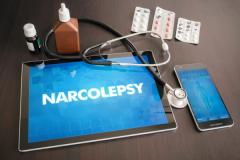
Patient Education and Shared Decision-Making in Narcolepsy
Panelists discuss the importance of shared decision-making in narcolepsy care, emphasizing structured conversations that explore patient goals, treatment preferences, and concerns—while navigating practical barriers like insurance—so that therapy selection is personalized and collaborative, often requiring a multimodal approach for optimal outcomes.
Episodes in this series

When discussing treatment options with narcolepsy patients, a shared decision-making approach is essential. Clinicians emphasize beginning the conversation by understanding the patient’s goals, concerns, and prior knowledge. Providing a structured overview of available treatment classes—including wake-promoting agents, stimulants, histaminergic agents like pitolisant, and oxybate formulations—helps patients make informed choices. It is also critical to clarify which medications are approved for cataplexy, excessive daytime sleepiness, or both so that patients can align treatment with their symptom priorities.
The clinicians note that practical considerations, such as insurance barriers and prior authorization requirements, often shape treatment choices as much as clinical preferences. Although some patients may prefer a specific option up front, authorization processes may necessitate trying other agents first. Framing this as a systematic exploration—rather than a setback—can help maintain patient engagement. Patients should also be informed that narcolepsy often requires a multimodal treatment strategy. Because different medications target different neurotransmitter pathways, many patients benefit from using more than 1 agent to improve symptoms and overall quality of life.
Incorporating structured models for shared decision-making can enhance the patient conversation. One model mentioned is the F-I-E-S (or “FIFE”) framework: Functioning, Ideas, Fears, and Expectations. This approach helps elicit the patient’s lived experience of their condition, their beliefs and understanding of treatment, and any underlying apprehensions or stigmas, particularly around scheduled medications. Discussing these factors up front helps build trust and demystify treatment. Ultimately, addressing knowledge gaps and emotional concerns early allows clinicians to tailor recommendations while reinforcing that the treatment journey may involve trial and error, but that the care team is a partner in navigating it.
Newsletter
Receive trusted psychiatric news, expert analysis, and clinical insights — subscribe today to support your practice and your patients.
















